Chicamocha: High Altitude Wine River
Abstract
In 1982 started at the Puntalarga Hill our Sun Valley's (Valle del Sol) quality wine growing project. Vineyards are situated in the great highland at altitudes between 2400 and 2600 meters a.s.l, on suitable sloping land soils, under enough sunshine, daytime heating, nighttime cooling and water deficit, wich are necessary conditions for producing premium wine grapes. Since the nineties viticultural extension is under way in several places. It seems that the Chicamocha river exercises on the viticultural extension pattern some kind of effects, comparable to those attributed to other wine rivers. Most representative rivers of the traditional habitat of regional grown grapevines, white Riesling and Pinot noir, are the Rhine in Germany and the Saone in France. The geographical viticulture extension pattern follows the Chicamocha river course direction. It practically extends over the distribution pattern of pre-hispanish population spots under Sogamoso's religious center influence before 1537. Descendant's distribution pattern of colonial time introduced Mission's grapevines shows a similar behavior. These phenomena could possibly be related to the regional geological history, particularly of the Chicamocha river. Understanding the mentioned phenomena could deliver valuable clues on the deep background of the regional “terroir” increasing the mystique, established on quality that regional wine already reveals.
Author Biography
Marco Quijano Rico, Fundación Universitaria Juan de Castellanos
References
•AUSTIN M. P. (1985) Continuum concept, ordination methods and niche theory. Annual Review of Ecology and Systematics, 16, 39 61.
•BESSIS R., HUDELOT B. (2006) Evolution des cepages. Insertion de la vigne dans son milieu, recherche des facteurs naturels de selection et d'evolution. Bull. OIV, 79, 129 139.
•BLOOMBERG TV (2007) Emisión del 30.6.07, 20h00, hora de Colombia.
•BUREL F., BAUDRY J. (2000) Ecologie du Paysage. Editions Tec Doc, Paris.
•CHAMPAGNOL F. (1984) Elements de physiologie de la vigne et de viticulture generale. F. Champagnol, Saint-Gely-du Fesc.
•CHAPARRO G. (2001) Asimilación carbónica de la vid, Vitis vinífera L., en condiciones de altitud tropical: alta irradiancia UV-B. Tesis, Biología. Viñedo & Cava Loma de Puntalarga, Nobsa / Universidad Nacional, Bogotá.
•DIEL A., PAYNE J. B. (2006) Feinster Pinot noir vom Schiefer. Assmannshausen.
Vinuum, Februar, 28 33.
•FALCETTI M. (1994) Faedo e il suo vigneto, annotazione geografiche, storiche ed agronomiche sulla viticoltura e l'enologia del conoide trentino. Stampalith, Trento.
•FREGONI C., PEZZUTTO S. (2000) Principes et premiçres approaches de l'indice
bioclimatique de qualité de Fregoni. Progrçs Agricole et Viticole 117, 18, 390 -396.
•GÓMEZ F. (2004) Zonificacion, Terroir y fortalecimiento de los campesinos viticultores en el Valle del Sol, Boyacá. Cultura Cientifica, Tunja, N° 2, 16 25.
•HUGLIN P. (1986) Biologie et ecologie de la vigne. Payot, Lausanne.
•JOHNSON H. (1989) Une histoire mondiale du vin. Hachette, Paris.
•KRAMER M. (1989) Making sense of Burgundy. William Morrow, New York.
•LEVINE D (1994) L'or des dieux, l'or des Andes : Perou, Equateur, Colombie. UNESCO, Conseil General de la Moselle. Editions Serpenoise, Metz.
•QUIJANO RICO M. (2001) Los Vinos del Valle del Sol: el nacimiento de la viticultura y de la enología de clima frío tropical. Cultura Cientifica, Tunja, Nº 1, 5-11.
•_______. (2003) Founding a tropical “Cru”: wine growing in “El Dorado” highland. Living Science, International Biographical Centre, Cambridge, 315-317.
•________. (2004) Ecología de una Conexión Solar: de la adoración del sol al desarrollo vitivinícola regional. Cultura Científica, Tunja, Nº 2, 5 9.
•________. (2006) Investigación e Innovación, Promoción y Defensa del “Terroir Regional”. Cultura Científica, Tunja, N°4, 35-41.
•________. (2007) Great highland's wine growing: low latitude agroclimatic compensation through altitude. OIV, selected paper, XXXth World Wine Congress. Budapest.
•QUIJANO RICO M., OCHOA L. (2007) Irregularidad de la brotación inducida por cianamida hidrogenada en Vitis vinífera, en curso. Viñedo y Cava Loma de Puntalarga, Nobsa.
•REYES I. (1990) Observaciones sobre el Cuaternario del altiplano Tunja Sogamoso. Geología Colombiana, Nº 17, 151 157.
•RIVAS MORENO G. (1997) Historia del Nuevo Reino de Granada, Canto primero. Elegías de varones ilustres de Indias, por Juan de Castellanos. Selene Impresores, Bogotá, 1159.
•ROBINSON J. (1994) The Oxford Companion to Wine. Oxford University Press, Oxford. •RUBIANO S. (1997) Incidencia de la altitud sobre la calidad del vino y el café. Tesis, Ingeniería de Alimentos. Viñedo & Cava Loma de Puntalarga, Nobsa /Universidad de la Salle, Bogotá.
•SITTLER C., MAROCKE R. (1981) Terroirs et Vins d'Alsace. Sci. Geol., Bull., 34, 3, 147 182.
•VAN DER HAMMEN T. (2001) Aspectos de historia y ecología de la biodiversidad norandina y amazónica. Rev. Acad. Col. Ciencias, 24, 231 245.
•VERONELLI L. (1988) Catalogo Bolaffi dei vini del mondo. Bolaffi Editore Torino.
•WILSON J. E. (1999) Terroir: Schluessel zum Wein. Hallwag, Stuttgart.
•WHITTAKER R. H. (1975) Communities and Ecosystems. McMillan, New York.




